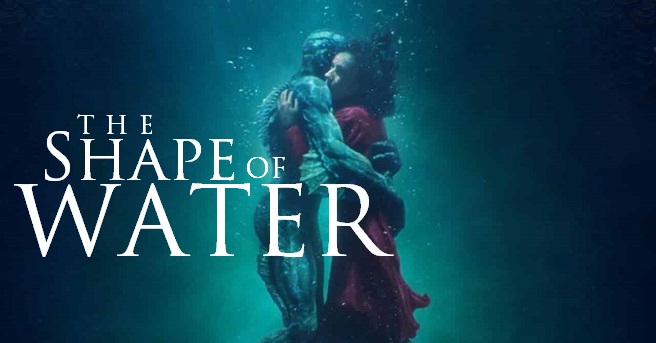Movie Review: “The Shape of Water”

There’s no widely accepted master of the “creature feature” the way Alfred Hitchcock is deemed the master of suspense, but Guillermo Del Toro deserves distinction as the genre’s modern master. The Shape of Water doesn’t feature Del Toro’s most memorable cinematic creature, but it hardly matters. With its gorgeous aesthetics, moving lead performance, and central theme about fulfilling inadequacy, it’s demonstrative of a director in top form and one of the best films of 2017.
Set in 1961 during the height of the Cold War, the film tells of Eliza Esposito, a mute cleaning lady played by Sally Hawkins, who befriends an amphibious humanoid creature held captive inside the secret government laboratory where she works. After teaching the creature to communicate via sign language and developing kinship with it, she tries to rescue it from Colonel Richard Strickland played by Michael Shannon, whose superiors order him to dissect the creature for research.
Though the relationship between Eliza and the creature is moving on its cutesy surface, it cuts to the heart of the movie’s theme of personal inadequacy and how people try to fill that void. Eliza can’t speak, but her limitation enables her to connect with the creature while the rest of her own kind tortures it and fails to see its humanity. When trying to recruit her neighbor played by Richard Jenkins to help her rescue the creature, she poignantly says, “When he looks at me he does not know how I am incomplete.”
Thanks to a magnetic central performance from Sally Hawkins, the viewer constantly roots for Eliza to achieve her goal and become complete. Acting like hell through her speechless restriction with a quiet but intense physicality, Hawkins’ performance beautifully balances delicateness and determination. Diametric to her, Michael Shannon radiates menace as Colonel Strickland. Though occasionally histrionic, Shannon proves he’s the kind of actor who can command the screen with his face. Like any good movie villain, the audience never roots Strickland, but is able to understand his motives and why he believes his actions are right.
Though usually a given that a Guillermo Del Toro film will boast resplendent visuals, The Shape of Water is worth seeing for aesthetic admiration alone. The postwar period detail pops with vivid color and evokes an idealized version of the time period, perfect for the film’s fantastical narrative.
Also evocative of the time period is the film’s creature star. As mentioned earlier, the creature is not one of Del Toro’s most imaginative and bears a resemblance to the Gill-Man from 1954’s Creature from the Black Lagoon. Still, Del Toro always draws his creatures with affection and it’s obviously a tribute that adds to the film’s nostalgic tone.
The film’s strengths keep one possible stickler point toward the third act from sticking in a viewer’s craw. When the relationship between Eliza and the creature evolves into a full-blown interspecies love story, one is somewhat unprepared for the film to venture into such daring territory. This could have ended disastrously in the hands of a less capable director and cast, but they lend the romance enough charm that most viewers will likely accept it. If not, the film’s ending will likely ameliorate any discomfort people may have about it.
Whether the viewer does warm up to what the third act attempts, there’s no denying that The Shape of Water is at the very least a respectable new entry in Del Toro’s filmography. To this critic, it deserves all the Oscar buzz it’s getting.
4.5/5
Tags: The Shape of Water











